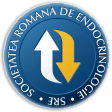
- Login
- Register
- Home/Current Issue
- About the journal
- Editorial board
- Online submission
- Instructions for authors
- Subscriptions
- Foundation Acta Endocrinologica
- Archive
- Contact
 Romanian Academy
Romanian Academy
 The Publishing House of the Romanian Academy
The Publishing House of the Romanian Academy

ACTA ENDOCRINOLOGICA (BUC)
The International Journal of Romanian Society of Endocrinology / Registered in 1938in Web of Science Master Journal List
Acta Endocrinologica(Bucharest) is live in PubMed Central
Journal Impact Factor - click here.

-
Book Review
Badiu C
Who Classification of Endocrine and Neuroendocrine Tumours, 5th Edition - Who Classification of Tumours, Volume 10Acta Endo (Buc) 2024 20(3): 412-412 doi: 10.4183/aeb.2024.412
Abstract- -
Images in Endocrinology
Sandusadee N, Prakkamakul S, Boonchaya-Anant P, Snabboon T
Cerebrospinal Fluid Rhinorrhea Following Medical Treatment for an Invasive MacroprolactinomaActa Endo (Buc) 2021 17(3): 412-412 doi: 10.4183/aeb.2021.412
Abstract- -
Perspectives
Guler AM, Emrence Z, Bozdag EN, Pacal F, Abaci N, Tanakol R, Ekmekci SS
Effects of Variations in Bone Metabolism Related Genes on Bone Mineral Density of Patients with OsteoporosisActa Endo (Buc) 2024 20(4): 413-421 doi: 10.4183/aeb.2024.413
AbstractObjective. Osteoporosis is a complex disease and its development is influenced by genetic, epigenetic, metabolic, and environmental factors. However, specific genetic factors associated with osteoporosis are not fully understood. The aim of this study was to identify genetic risk factors for osteoporosis. Methods. This study included 86 females with osteoporosis and 47 healthy females. We analyzed rs1800587, rs16944, rs1799814, rs4988321, rs2228570, and rs35211496 variations in IL1A, IL1B, CYP1A1, LRP5, VDR, and RANK, respectively, using polymerase chain reaction-restriction fragment length polymorphism (PCRRFLP) analysis. Results. Our analysis revealed that the CT and TT genotype for rs1800587 in IL1A was associated with higher bone mineral density in the lumbar spine, trochanter, Ward's triangle, and femoral neck (p=0.020, p=0.021, p=0.015, and p=0.013, respectively). The rs1800587 variation in IL1A was associated with a reduced risk of osteoporosis in both dominant and codominant inheritance models (CC vs. CT, p=0.016 and CC vs. CT/TT, p=0.035, respectively). However, we did not identify any statistically significant differences in either genotype or allele frequencies between the control group and the patients with osteoporosis for the other genetic variations examined. Conclusion. Our findings suggest that the rs1800587 variation in IL1A gene is associated with a significantly decreased risk of osteoporosis in the Turkish population. -
General Endocrinology
Dasgupta R, Pradhan D, Sengupta SC, Nag T, Maiti BR
Ultrastructural and hormonal modulations of adrenal gland with alterations of glycemic and liver glycogen profiles following arecoline administration in albino miceActa Endo (Buc) 2010 6(4): 413-430 doi: 10.4183/aeb.2010.413
AbstractBackground. Arecoline, a plant alkaloid of betel nut, is consumed by millions of people, for increased capacity of work. It causes immunosuppression, hepatotoxicity, and disturbance in antioxidant production, but it stimulates HPA axis and induces thyroid dysfunction.\r\nAim. To investigate the role of arecoline on adrenal activity, glycemia and glycogen profile in mice.\r\nMaterials and methods. Arecoline was injected intraperitoneally at a dose of 10 mg/kg body wt for 20-60 min for acute administration. In chronic administration the same dose was used daily for 15 days. Corticosterone, epinephrine, norepinephrine, blood glucose and liver glycogen profiles were measured after 20, 40 and 60 min, in acute administration and after 15 days in chronic administration.\r\nResults. Arecoline in acute administration increased corticosterone, norepinephrine and epinephrine levels and induced hyperglycemia with depletions of liver glycogen. But\r\nchronic arecoline administration with the same dose for 15 days caused ultrastructural degenerations of adrenal cortex and medulla with the elevation of corticosterone, and\r\ndepletions of norepinephrine and epinephrine levels. Arecoline also caused hypoglycemia and elevated liver glycogen. Atropine (arecoline receptor antagonist) prevented arecoline action on adrenal activity or blood glucose ? liver glycogen interaction.\r\nConclusion. The findings indicate that arecoline initially stimulates adrenal activity, but subsequently inhibits it with alterations of glycemic and glycogen profiles. Arecoline action is mediated by arecoline receptor in mice. Arecoline may have immunological action via adrenal hormonal suppression in mice. -
Actualities in medicine
Galoiu S
Replacement Therapy with Recombinant Parathyroid Hormone (1-84) in HypoparathyroidismActa Endo (Buc) 2015 11(3): 413-414 doi: 10.4183/aeb.2015.413
AbstractHypoparathyroidism is a disease characterized by low serum calcium and inappropriate low parathyroid hormone (PTH) levels. Common therapy for chronic hypoparathyroidism usually includes oral calcium and activated vitamin D supplementation (calcitriol), hypoparathyroidism being the one of few endocrine disorders not replaced by the missing hormone. In January 2015, FDA approved PTH (1-84) for the treatment of hypoparathyroidism in patients who cannot be well-controlled on calcium and active forms of vitamin D alone and for whom the potential benefits are considered to outweigh this potential risk. Until now, there are 4 phase 3 clinical trials investigating the role of human recombinant PTH (1-84) for the treatment of hyopoparathyroidism: Replace, Race, Relay, and Repeat. These studies demonstrated a more than 50% reduction in calcium and active vitamin D requirements. Future strategies for the treatment of hypoparathyroidism could be stem cell therapy recombinant with PTH and viral or nonviral factors or parathyroid gland transplantation. -
General Endocrinology
Diri H, Sener EF, Bayram F, Dundar M, Simsek Y, Baspinar O, Zararsiz G
Genetic Disorders of Pituitary Development in Patients with Sheehan'S SyndromeActa Endo (Buc) 2016 12(4): 413-417 doi: 10.4183/aeb.2016.413
AbstractIntroduction. Genetic disorders associated with the development of the pituitary gland and cranial bones may cause a genetic tendency toward Sheehan’s syndrome (SS). Our aim in this study was to investigate expression disorders in the genes responsible for the development of the pituitary gland and cranial bones in patients with SS. Materials and Methods. Forty-four patients who were previously diagnosed with SS and 43 healthy women were compared in terms of the mean expression values of genes including the prophet of PIT-1 (PROP1), HESX homeobox 1 (HESX1), POU class 1 homeobox 1 (POU1F1), LIM homeobox 3 (LHX3), LHX4, glioma-associated oncogene homolog 2 (GLI2), orthodenticle homeobox 2 (OTX2), SIX homeobox 3 (SIX3), SIX6, T-box transcription factor 19 (TBX19), transducin-like enhancer protein 1 (TLE1), TLE3, distal-less homeobox 2 (DLX2), DLX5, MSH homeobox 2 (MSX2), and paired box 3 (PAX3). Results. The mean expression values of the HESX1, TLE1, TLE3, and MSX2 genes were significantly different in the SS group from the healthy control group, while the mean expression values of the remaining genes were similar. Conclusion. The present study concludes that abnormal expressions of HESX1, TLE1, TLE3, and MSX2 genes may cause a genetic predisposition to the development of SS. -
Endocrine Care
Baculescu N, Radian S, Gussi IL, Gheorghiu ML, Coculescu M
Insulin, Independent of Serum Androgens of Androgen Receptor CAG Repeat Polymorphism, is Associated with Hirsutism in Polycystic Ovary SyndromeActa Endo (Buc) 2012 8(3): 413-426 doi: 10.4183/aeb.2012.413
AbstractBackground. Hirsutism is part of current criteria of polycystic ovary syndrome (PCOS), as a clinical expression\r\nof hyperandrogenism.\r\nObjective. To evaluate the significant factors for hirsutism severity in PCOS.\r\nPatients. A total of 235 PCOS patients, consecutively coming for medical advice, aged 18-35 yrs, all of Romanian origin, were diagnosed according to Rotterdam criteria.\r\nMethods. Hirsutism, quantified using the modified Ferriman-Gallwey (mFG) procedure, was defined by values equal or\r\nmore than 6. Other parameters evaluated were: body mass index (BMI), fasting insulinemia, insulin resistance quantified by QUICKI, total testosterone (TT), free androgen index (FAI), dehydroepiandrosterone sulfate (DHEAs), 17OH progesterone, fasting glycemia. In a subset of 106 patients, androgen receptor (AR) was explored by CAG repeat\r\ngenotyping and X-chromosome inactivation analysis.\r\nResults. The total PCOS population (235) was divided in group A (n=139, 59.14%) with hirsutism and group B (n=96, 40.85%) without hirsutism. In univariate correlations, serum\r\ninsulin levels (p<0.05) and insulin resistance quantified by QUICKI (p<0.05), but not FAI, TT, DHEAs, 17OH progesterone or BMI were associated significantly with mFG score, in group A of hirsute PCOS patients and also in group B\r\nof nonhirsute PCOS. In a stepwise regression mFG model,\r\nincluding TT, insulin and BMI, only insulin remained independently associated with mFG score (p<0.05) in the group A of hirsute PCOS patients, whereas in group B\r\nof the nonhirsute PCOS, there were not significant associations. Androgen receptor parameters explored in 106 cases, i.e. by the biallelic means and X-weighted biallelic means of CAGn, did not show significant associations with mFG score in univariate correlations. Only insulin was significantly associated (p<0.05) in another stepwise\r\nregression model of mFG including as parameters insulin, TT, biallelic means of CAGn and BMI.\r\nConclusions. Our results support that insulin is significantly associated with the\r\nseverity of mFG score in PCOS patients, independent of serum androgens or androgen receptor sensitivity expressed by\r\nCAGn polymorphism. This suggests a possible pathogenic role of high insulin level for the development and progression\r\nof hirsutism, at least in PCOS. -
Notes & Comments
Duncea I, Crisan L, Ilie L, Paul A, Popp R
Cytotoxic t-lymphocyte Antigen 4 (ctla-4) - 1661 a/g and -658 c/t Gene Polymorphisms in Autoimmune Thyroid Diseases: a Pilot StudyActa Endo (Buc) 2011 7(3): 413-423 doi: 10.4183/aeb.2011.413
AbstractIntroduction. Autoimmunity derives from a complex interplay of genetic and environmental factors. Major histocompatibility complex (MHC) alleles and non-MHC loci have been identified as susceptibility markers. Few studies evidenced an association between autoimmune thyroid disease (ATD) and CT60 or 49 A/G polymorphisms in the CTLA-4 gene. Objectives. The aim of our research was to investigate in a pilot case-control study whether other two CTLA-4 gene polymorphisms, i.e. the CTLA-4 1661 A/G and the CTLA-4 658 C/T single nucleotide polymorphisms (SNP), are involved in genetic predisposition to ATD. Material and methods. Between January and April 2009, 42 subjects entered the study. Of these, ATD (i.e. chronic autoimmune thyroiditis, Graves’ disease) was diagnosed in 21 patients, whereas in 21 subjects no signs of autoimmunity were identified. CTLA-4 gene polymorphisms were genotyped using polymerase chain reaction-restriction fragment length polymorphism (PCR-RFLP). Results. No association was observed between the CTLA-4 1661A/G gene polymorphism in patients with ATD and controls (p = 0.094, by chi-square test). Likewise, no statistically significant difference was noticed between groups with regard to the CTLA-4 658 C/T gene polymorphism (p = 0.649). Conclusions. At the time being, this is the first case-control study that examined and demonstrated lack of association between CTLA-4 -1661 A\G and -658 C\T SNP and ATD; however, larger numbers of subjects are needed to clarify the role of CTLA-4 gene polymorphisms in endocrine autoimmunity. -
Notes & Comments
Urbanovych AM, Laniush F, Borovets M, Kozlovska K
Coronavirus as a Trigger of Graves’ DiseaseActa Endo (Buc) 2021 17(3): 413-415 doi: 10.4183/aeb.2021.413
AbstractContext. SARS-CoV-2 infection was declared a pandemic in 2020 and affected millions of people worldwide. Angiotensin-converting enzyme-2 receptors, through which coronavirus enters the cells of different organs, have been detected in the thyroid gland. The most common cause of thyrotoxicosis is Graves’ disease in which thyroid-receptors antibodies (TRAb) stimulate the TSH receptor, increasing thyroid hormone production and release. Case presentation. A 22-year-old woman had symptoms of palpitation, tremor, muscle weakness, anxiety and sleep disturbance. 3 weeks before the onset of these symptoms, the patient suffered from COVID-19, which lasted 14 days and was characterized by a course of moderate severity with fever up to 38˚C, general weakness without shortness of breath. The patient had no pre-existing thyroid problems. Her TSH was <0.01 mU/L, FT4, FT3 and TRAb were increased. Antithyroid drugs, glucocorticosteroids and β-blockers were prescribed. During 3 months of treatment doses of methimazole, methylprednisolone and bisoprolol were gradually reduced due to the improvement of the patient’s condition and thyroid tests normalization. Conclusions. COVID-19 infection can cause Graves’ disease and thyrotoxicosis. The onset of this disease after SARS-CoV-2 does not depend on the presence of preexisting thyroid pathology and requires the appointment of glucocortisteroids. -
Endocrine Care
Chiorean A, Georgescu CE, Feier DS, Florea M, Chiorean M, Sfrangeu S, Avram R, Duma MM
Accuracy, Reproducibility and Reliability of Ultrasound Elastography versus Histopathology of Malignancy in Patients with Solid Thyroid NodulesActa Endo (Buc) 2014 10(3): 414-424 doi: 10.4183/aeb.2014.414
AbstractBackground. Thyroid nodules stiffness may predict thyroid malignancy. Objectives. The purpose of the study was to investigate the diagnostic value, interobserver agreement and reliability of real time ultrasound elastography (USE) when assessing solid thyroid nodules. Design. A prospective, observational study in a tertiary center. Subjects and Methods. In 49 patients scheduled for thyroidectomy, a senior radiologist and two radiologists in training independently assessed 81 solid thyroid nodules with USE using a 6600 Hitachi machine. Pathology results were used as a reference standard. Nodule stiffness was evaluated using the Asteria scoring system. The diagnostic ability of the elastography scores for the assessment of the thyroid solid nodules was evaluated using AUROC (area under the receiver operating characteristic curve) analysis. The Cohen’s kappa (k) values were used for interobserver agreement evaluation and interclass correlation coefficient (ICC) was used as a measure of reliability. Results. Pathology results revealed 20 papillary carcinomas and 61 benign nodules. The elastography identification of malignant nodules by the senior radiologist was performed with an AUROC of 0.84 [95% Confidence interval (CI) 0.74-0.91], with Sensitivity= 100%, and Specificity= 68.85%. When performed by ultrasound operators in training, the diagnostic performance slightly decreased. With no statistically significant difference between the diagnostic performance of the three readers, USE demonstrated good inter-observer agreement and good reliability (ICC= 0.81). Conclusion. USE may be an accurate tool of assessment for solid thyroid nodules, identifying with high sensitivity the malignant ones, particularly micronodules. USE is reproducible and reliable when used both by experienced operators and medical professionals in training.